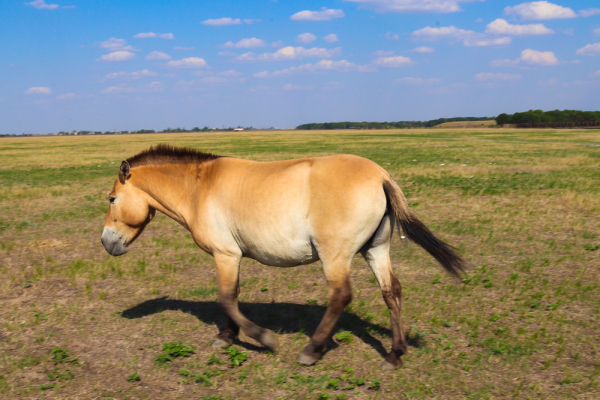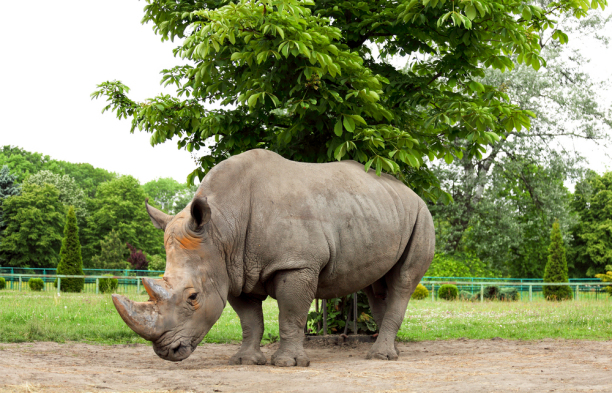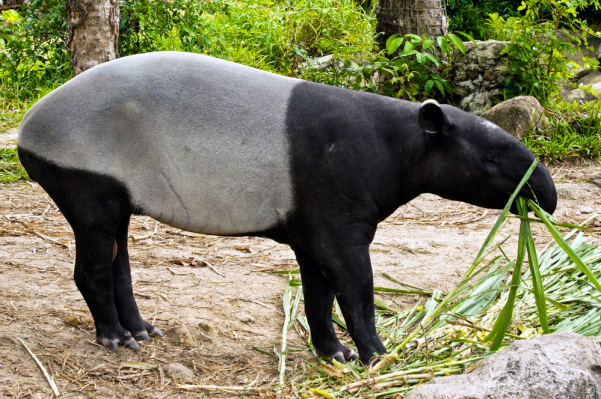Perissodactyla is an order of hoofed mammals that includes asses, horses, rhinoceroses, tapirs, and zebras. Most wild Perissodactyls live on the continents of Asia, and Africa.
Physical Characteristics
Perissodactyls have a mesaxonic foot meaning that the weight is distributed on the third toe on all legs. Rhinoceroses grow horns on the upper surface of their snout, these horns are made of keratin, a fibrous protein that is also found in hair. Rhinoceros horns grow continuously, and do not have a bone core. Tapirs have a small trunk like snout.
Distribution and Habitat
Wild Perissodactyls that are native to their ranges can be found on all continents with the exception of Australia and Antarctica, however there are feral populations of horses living in Australia. T Wild Perissodactyls inhabit; deserts, forests, grasslands, marshy areas, plains, and savannah,
Diet
Perissodactyls are herbivores, this means they only eat vegetation. There are two types of herbivore, grazing herbivores, and browsing herbivores. Grazing herbivores eat primarily grasses, and browsing herbivores eat leaves, soft shoots, or fruits of high-growing, generally woody plants.
Listed below are the families classified in the Perissodactyla order:

Equidae. Asses, horses, the Kiang, the Onager, and zebras are all the Perissodactyls that are classified in the Equidae family. The African Wild Ass (Equus africanus) sometimes referred to as the True Ass, lives in Ethiopia and Eritrea. The Asiatic Wild Ass, also known as the Asian Wild Ass or the Half-Ass (Equus hemionus) lives in China, Iran, Mongolia, and Turkmenistan. The Kiang(Equus kiang) lives in the arid highlands of Nepal, India, Pakistan, and the Qinghai and Gansu Provinces, and the western Tibet regions of China. The Onager also known as the Persian Onager(Equus onager), ranges from northwest Iran to Turkmenistan. The Donkey (Equus asinus) is a domesticated descendant of the African Wild Ass. The horse(Equus caballus)was domesticated approximately 6,000 years ago in the steppelands north of the Black Sea from Ukraine to Kazakhstan. Przewalski’s Horse, (subspecies Equus caballus przewalskii or E. ferus przewalskii), is the last wild horse subspecies surviving in the 21st century. It was discovered in western Mongolia in the late 1870s by the Russian explorer N.M. Przhevalsky. There are three species of zebra that are all native to Africa, they are; The Plains Zebra(Equus quagga), Grevy’s Zebra(Equus grevyi), and the Mountain Zebra(Equus zebra). Zebras are easy to identify because of their black and white striped bodies. Scientific studies show that the zebra’s stripes disrupt the horizontal pattern of polarized light reflected from dark surfaces that normally attract biting horse flies.

Rhinocerotidae. There are five species of Rhinoceros, they are; The White Rhinoceros(Ceratotherium simum), Black Rhinoceros(Diceros bicornis), Indian Rhinoceros(Rhinoceros unicornis), Javan Rhinoceros(Rhinoceros sondaicus), and Sumatran Rhinoceros(Dicerorhinus sumatrensis). Both the Black Rhinoceros and White Rhinoceros are found in Africa. The Indian Rhinoceros, also known as the Greater One-Horned Rhinoceros, lives in India and Nepal. The Javan Rhinoceros only lives in the Udjung-Kulon Reserve in western Java, and the Sumatran Rhinoceros lives in Myanmar, Thailand, West Malaysia, Sumatra, and East Malaysia.

Tapiridae. There are five species of tapir, they are; The Malayan Tapir(Tapirus indicus), Mountain Tapir(Tapirus pinchaque), Baird’s Tapir(Tapirus bairdii), Kobomani Tapir(Tapirus kabomani), and the Lowland Tapir(Tapirus terrestris). The Malayan Tapir lives in Southeast Asia, and the other four species live in Central America and South America.
Feral Horses
there are feral populations of horses found in Africa, Asia, the Americas, Europe, and Oceania. Listed below are some examples of feral populations:
- There are two herds that live on both sides of Assateague Island, which is off the Atlantic Ocean coast of southeastern Maryland and eastern Virginia, U.S. Lying south of Ocean City, Maryland.
- There are free-roaming horses on the Eastern Slopes of the Rocky Mountains in Alberta that are known locally as the Alberta Mountain Horse or “Wildie”.
- The Kundudo Horse, lives in the Kundudo region, Ethiopia.
- Lavradeiros can be found in northern Brazil.
- The Misaki Horse lives in Cape Toi, Japan.
- Giara Horse lives in Sardinia.
- The Brumby is a free-roaming feral horse in Australia.
